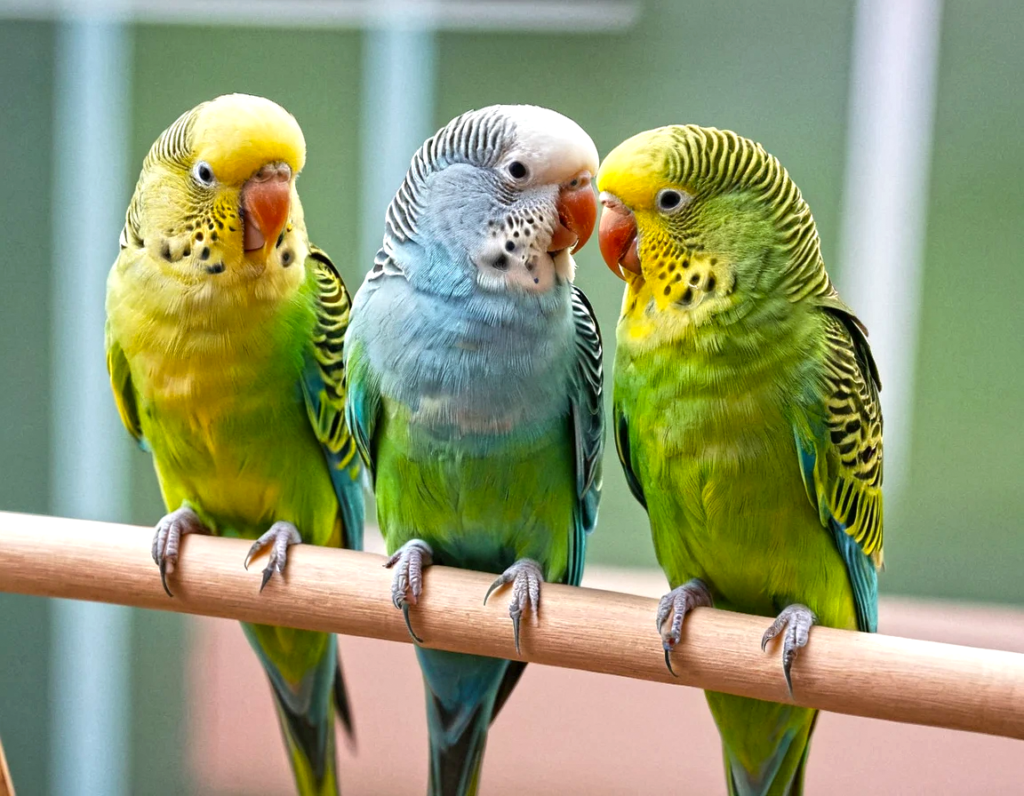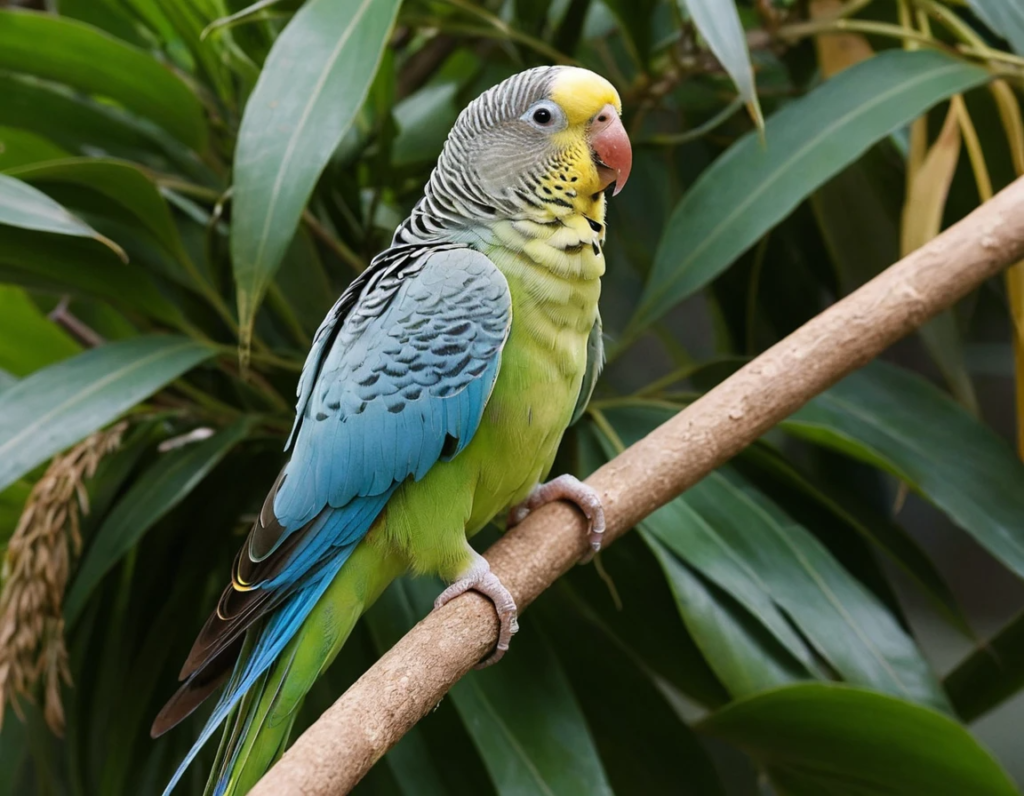
Symptoms of Respiratory Problems in Parakeets
Parakeets may be small, but they have big personalities—and even bigger lungs (proportionally speaking, of course). Their tiny respiratory systems are delicate, which means even minor issues can lead to serious health problems. If your feathered friend starts acting a little off, it might be time to check for signs of respiratory problems.
Open-Mouth Breathing
If your parakeet is sitting with its beak open like it’s trying to tell you a secret, but no words are coming out, it could be a sign of respiratory problems. Birds usually breathe through their nostrils, so open-mouth breathing is a red flag. Imagine running a marathon without training—that’s what your parakeet might feel like if it’s struggling to breathe!
Tail Bobbing
A little movement in your parakeet’s tail is normal, but if their tail is bobbing up and down like they’re listening to some slow jazz, they might be working too hard to breathe. Excessive tail bobbing is one of the biggest indicators of respiratory problems in birds.
Sneezing and Nasal Discharge
Yes, birds sneeze. And just like humans, occasional sneezing is fine. But if your parakeet is sneezing more than a person with hay fever in spring, it might be cause for concern. Discharge from their nostrils (called nares) is another symptom to watch out for. Clear discharge might just mean irritation, but yellow, green, or thick mucus? Time to call the bird doctor!
Wheezing or Clicking Sounds
Birds are not supposed to sound like a broken bicycle pump. If you hear wheezing, clicking, or other strange noises when your parakeet breathes, it’s a definite sign of respiratory problems. Try getting close and listening carefully—it’s not ASMR, but it’ll help you figure out if something is wrong.
Lethargy and Fluffed-Up Feathers
A parakeet that’s sitting puffed up and looking like a tiny, grumpy ball of fluff might not just be feeling cozy—it might be sick. If they’re less active than usual, avoiding playtime, or sleeping more, respiratory problems could be the culprit.
Change in Voice or Loss of Chirping
Parakeets love to chatter, and if your usually talkative bird suddenly turns into the strong, silent type, take note. A change in their voice, a raspy chirp, or complete silence could indicate breathing difficulties. Imagine losing your voice before karaoke night—not fun for you, and definitely not fun for your bird!
What to Do If Your Parakeet Has Respiratory Problems
If you notice any of these symptoms, don’t wait. Birds hide illnesses well, so by the time symptoms show up, the issue might already be serious.
- Move them to a warm, quiet area to reduce stress.
- Check the environment for irritants like scented candles, cooking fumes, or dusty bedding.
- Take them to an avian vet as soon as possible. Don’t try to play “Dr. Google” with your bird’s health!
Preventing Respiratory Problems in Parakeets
A few simple habits can keep your parakeet’s lungs in tip-top shape:
- Keep their cage clean and well-ventilated.
- Avoid using aerosols, perfumes, or non-stick cookware (Teflon fumes are toxic to birds!).
- Make sure their diet includes plenty of vitamin A, which helps maintain healthy respiratory tissue.
Your parakeet might be small, but their health is a big deal. By recognizing the symptoms of respiratory problems early, you can help ensure your chirpy little companion stays happy, healthy, and as chatty as ever!
Aspergillosis in Parakeets: What You Need to Know
Parakeets are tiny, feathery bundles of joy, but their respiratory systems? Not so tough. One sneaky illness that can wreak havoc on your bird’s health is Aspergillosis—a fungal infection that primarily affects the lungs and air sacs. If left untreated, it can lead to serious respiratory problems and even be fatal. But don’t panic just yet! Let’s break it down in a simple, understandable way (with a bit of humor to keep things light).
What is Aspergillosis, and How Does it Happen?
Aspergillosis is caused by a fungus called Aspergillus, which is basically mold’s evil cousin. This fungus is found everywhere—yes, even in your parakeet’s environment. The problem begins when a bird inhales its spores, and the immune system isn’t strong enough to fight them off. It’s like breathing in tiny, invisible troublemakers.
Dirty cages, damp conditions, and poor ventilation make it easier for this fungus to thrive. If your bird’s home is starting to look like a haunted house, it’s time for a deep clean!
Symptoms of Aspergillosis in Parakeets
Unlike some illnesses that come with flashy symptoms, aspergillosis sneaks up on birds. The signs can be subtle at first, which is why many parakeet owners don’t notice until the infection has progressed. Here’s what to watch for:
- Labored Breathing – If your parakeet sounds like it just ran a marathon (but hasn’t left its perch), it might have respiratory problems.
- Tail Bobbing – Excessive tail movement when breathing is a warning sign.
- Wheezing or Clicking Sounds – If your bird sounds like a tiny accordion, something’s up.
- Loss of Appetite – Not interested in food? That’s a problem.
- Lethargy – If your once-energetic bird is suddenly acting like a couch potato, take note.
- Voice Changes or Loss of Chirping – If your chatty parakeet has gone silent, it’s worth investigating.
Diagnosis and Treatment
If you suspect aspergillosis, don’t waste time—get your bird to an avian vet. The vet may use X-rays, blood tests, or even endoscopy (a tiny camera) to check for fungal infections. Unfortunately, this isn’t a simple “take a pill and feel better” situation. Treatment often involves antifungal medications, and in severe cases, oxygen therapy or surgery may be needed.
Prevention: Keep the Fungus Away!
The best way to deal with aspergillosis is to prevent it in the first place. Here’s how:
- Keep the cage clean – Mold loves damp, dirty environments, so regular cleaning is a must.
- Ensure proper ventilation – Stagnant air increases the risk of fungal growth.
- Avoid dusty or moldy food – Make sure seeds and pellets are fresh.
- Provide a healthy diet – A strong immune system helps fight off infections.
Final Thoughts
Aspergillosis is a serious condition, but with the right care, your parakeet can avoid this nasty fungal infection. Pay attention to any signs of respiratory problems, keep their environment clean, and don’t hesitate to visit a vet if something seems off. After all, a happy, healthy parakeet means more chirps, more antics, and more adorable head tilts!
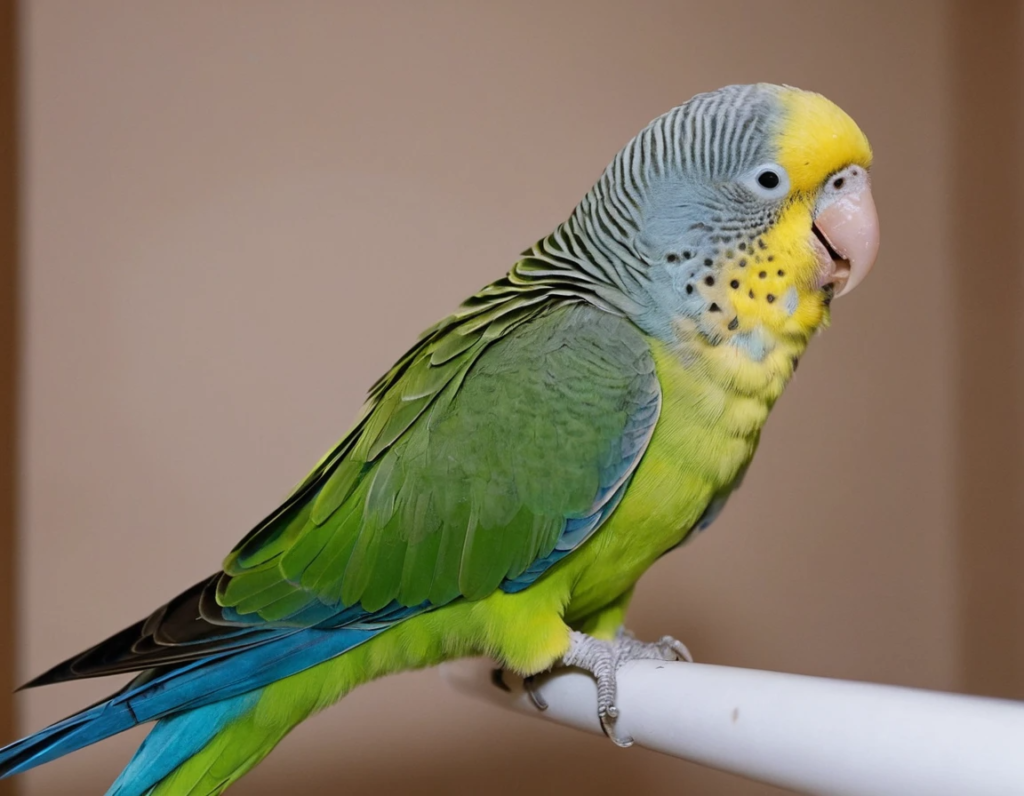
Chlamydiosis (Psittacosis) in Parakeets: What Every Bird Owner Should Know
Parakeets are full of energy, chirps, and an undeniable knack for getting into trouble. But one thing they don’t need is Chlamydiosis (Psittacosis)—a sneaky bacterial infection that can cause serious respiratory problems. Oh, and did we mention it can spread to humans? Yes, your tiny feathered friend might accidentally give you the “parrot flu.”
Let’s break it down in a simple, no-nonsense way (with a bit of humor to keep things light).
What is Chlamydiosis (Psittacosis)?
Chlamydiosis, also called Psittacosis, is caused by the bacteria Chlamydia psittaci (not to be confused with its human-related cousin, but let’s not go there). This bacteria doesn’t just make birds sick—it can also jump to humans, which is why it’s sometimes called “parrot fever.”
Birds can carry the bacteria for weeks without showing any symptoms, but once it takes hold, it’s trouble. It spreads through droppings, dust, and even a simple sneeze. Yes, your bird can sneeze—who knew?
Symptoms of Chlamydiosis in Parakeets
Parakeets are experts at hiding illnesses, so by the time you notice symptoms, they might already be feeling pretty awful. Here’s what to look for:
- Fluffed-Up Feathers & Lethargy – If your parakeet looks like a tiny, grumpy cotton ball and is sleeping more than usual, something’s up.
- Loss of Appetite – If your bird suddenly refuses their favorite seeds, alarm bells should ring.
- Watery, Green Droppings – Yes, poop is important. Weird, discolored droppings could mean an infection.
- Nasal Discharge & Sneezing – A runny nose and constant sneezing aren’t just annoying for humans; they’re a sign of respiratory problems in birds.
- Wheezing & Breathing Difficulties – If your parakeet sounds like it’s trying to start a broken engine, it’s time for a vet visit.
- Weight Loss – If your bird is looking slimmer but hasn’t been hitting the gym, something’s wrong.
Can Humans Catch Psittacosis?
Unfortunately, yes. If you’re feeling flu-like symptoms—fever, chills, cough, or just general misery—and your bird has been sick, you might have caught Psittacosis. Don’t panic, though! It’s treatable with antibiotics, but you’ll need to see a doctor.
Diagnosis and Treatment
If you suspect your parakeet has Chlamydiosis, get them to an avian vet ASAP. The vet may do blood tests, X-rays, or even swab their throat (good luck with that one).
Treatment usually involves a long course of antibiotics. And here’s the catch—you might have to give meds for weeks. Yes, WEEKS. Hope your parakeet enjoys taking medicine, or you’re in for a battle of wits.
Prevention: Keep It Clean!
The best way to protect your parakeet (and yourself) is by maintaining a clean, stress-free environment. Here’s how:
- Clean the cage regularly – Don’t let droppings pile up.
- Avoid overcrowding – Too many birds in one space = more risk.
- Quarantine new birds – If you’re adding a new feathery family member, keep them separate for a few weeks first.
- Wash your hands – A simple step that can prevent a lot of trouble.
Final Thoughts
Chlamydiosis (Psittacosis) is no joke. It’s one of those infections that can cause major respiratory problems in birds and even make humans sick. But with a little attention to hygiene and quick action if symptoms appear, you can keep your parakeet chirping happily for years to come.
So, next time your bird sneezes, maybe don’t say, “Bless you” — say, “We’re going to the vet.”
Air Sac Mites in Parakeets: The Tiny Terrors of the Respiratory System
Parakeets may be small, but their problems can be huge—especially when it comes to air sac mites. These microscopic parasites are like unwanted guests that move in, refuse to leave, and wreak havoc on your bird’s breathing. If left untreated, they can cause serious respiratory problems, making it harder for your parakeet to chirp, play, and just enjoy life.
Let’s dive into what air sac mites are, how to spot them, and what you can do to evict these tiny troublemakers.
What Are Air Sac Mites?
Air sac mites (Sternostoma tracheacolum, if you want to sound fancy) are microscopic parasites that invade a bird’s respiratory system, including the trachea, lungs, and air sacs. Think of them as microscopic squatters who don’t pay rent but cause all sorts of damage.
These mites are especially common in parakeets, canaries, and finches. They spread through direct contact, such as when birds feed each other or share food and water bowls. So if you have multiple birds, one sick parakeet can turn into a house-wide infestation.
Symptoms of Air Sac Mites in Parakeets
Since these little pests live inside your bird’s airways, their symptoms are all related to respiratory problems. Here’s what to watch for:
- Clicking or Wheezing Sounds – If your parakeet sounds like it’s trying to start an old car engine, that’s a sign something’s wrong.
- Open-Mouth Breathing – If your bird is breathing with its beak open like it’s dramatically gasping for air, it’s not for dramatic effect—it’s struggling.
- Tail Bobbing – Excessive up-and-down tail movement when breathing is a bad sign.
- Coughing or Sneezing – Yes, birds can cough. If you hear frequent sneezes or strange throat noises, it could mean trouble.
- Loss of Voice or Chirping – If your usually chatty parakeet suddenly turns into a silent observer, something’s up.
- Lethargy and Fluffed Feathers – A bird that looks puffed up and inactive is not just having a lazy day—it might be feeling awful.
How Are Air Sac Mites Diagnosed?
If you suspect your parakeet has air sac mites, don’t try diagnosing it yourself (unless you have a microscope lying around). Take your bird to an avian vet. They may use a tiny endoscope to check for mites in the trachea or listen to your bird’s breathing for abnormal sounds.
Treatment: How to Kick These Mites Out
The good news? Air sac mites are treatable! The most common treatments include:
- Ivermectin – A few drops of this medication (usually on the skin or in drinking water) can help eliminate mites.
- Environmental Cleaning – If one bird has mites, assume they’re everywhere. Clean cages, perches, and toys thoroughly.
- Quarantine Infected Birds – If you have multiple birds, keep the sick one separate until treatment is complete.
Preventing Air Sac Mites
Prevention is always easier than treatment. Here’s how to keep these tiny invaders away:
- Keep the Cage Clean – Regularly clean and disinfect food and water bowls.
- Limit Contact with Unknown Birds – If you bring in a new bird, quarantine it for a few weeks.
- Provide a Healthy Diet – A strong immune system helps fight off infections and parasites.
Final Thoughts
Air sac mites may be tiny, but they cause big respiratory problems for parakeets. The key is early detection—if you notice wheezing, coughing, or unusual breathing, don’t wait! Get your feathery friend checked out before these mites take over.
And remember, a chirping parakeet is a happy parakeet—so let’s keep them singing!
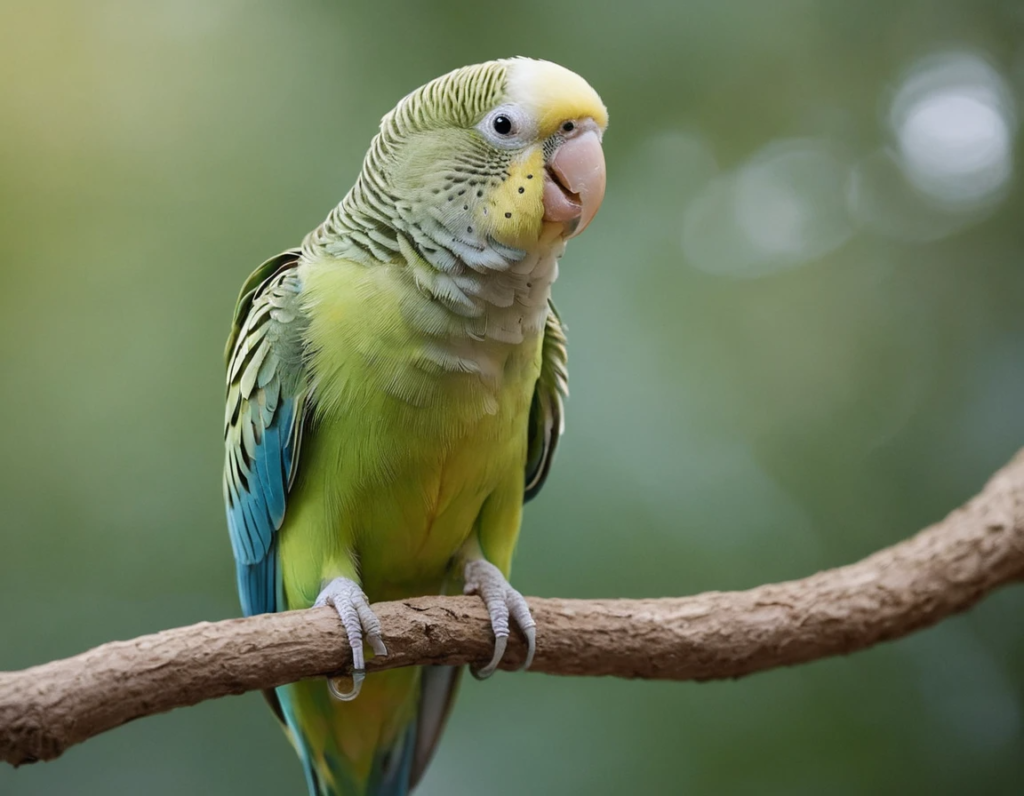
Vitamin A Deficiency and Respiratory Health
Parakeets are charming little chatterboxes, but their health needs can sometimes be overlooked—especially when it comes to Vitamin A deficiency. This essential vitamin plays a crucial role in keeping their immune system strong, their feathers glossy, and most importantly, their respiratory health in check.
Let’s break it down in a way that makes sense (and keeps things light, because no one wants a boring lecture).
What is Vitamin A Deficiency?
Vitamin A is responsible for maintaining healthy skin, tissues, and organ function in birds. When a parakeet isn’t getting enough of it, things start to go downhill—especially in the respiratory system. The lining of the throat, sinuses, and airways becomes thick and irritated, making it easier for bacteria to set up camp.
Think of it like this: Vitamin A is the security guard that keeps unwanted intruders (infections) out. Without it, your bird’s body becomes an all-you-can-eat buffet for germs.
Signs Your Parakeet Might Be Lacking Vitamin A
Vitamin A deficiency doesn’t happen overnight. It sneaks up like a slow-moving villain in a bad movie. Here are some signs to watch for:
- Frequent Sneezing and Nasal Discharge – If your bird sounds like it has allergies 24/7, it might be a deficiency issue.
- Swollen or Watery Eyes – No, your parakeet isn’t crying over a sad movie—it might be struggling with respiratory problems.
- Wheezing or Clicking Noises – If your bird is making sounds like a tiny malfunctioning robot, it’s time to pay attention.
- Changes in Feather Quality – Dull, rough, or missing feathers can signal poor nutrition.
- Loss of Appetite and Lethargy – A normally energetic parakeet turning into a grumpy couch potato? Not a good sign.
How Does Vitamin A Deficiency Lead to Respiratory Problems?
When Vitamin A levels drop, the protective lining of the respiratory tract weakens, making it easier for infections to take hold. This can lead to chronic respiratory problems, sneezing fits, and even serious illnesses like pneumonia.
Basically, if you don’t fix the vitamin deficiency, you’re signing up for a feathery version of a never-ending cold. And trust me, no one wants that—not you, not your bird, and definitely not your vet.
Fixing the Problem: How to Boost Vitamin A in Your Bird’s Diet
The good news? It’s easy to fix! Parakeets don’t need vitamin supplements if they’re getting the right food. Here’s what you should add to their diet:
- Carrots – Full of beta-carotene (which the body turns into Vitamin A).
- Sweet Potatoes – A tasty, nutritious option.
- Red Peppers – Crunchy, colorful, and packed with vitamins.
- Dark Leafy Greens (Spinach, Kale) – Not just for humans!
- Broccoli – Your bird might not love it, but their lungs will.
Preventing Vitamin A Deficiency
The best way to prevent respiratory problems related to Vitamin A deficiency is simple: feed your bird a varied diet. Seeds alone won’t cut it. If your parakeet is a picky eater, try chopping veggies into tiny pieces and mixing them with their favorite foods.
Final Thoughts
Vitamin A might not seem like a big deal, but for a parakeet, it’s essential for strong immunity, good eyesight, and most importantly, healthy lungs. A well-fed bird is a happy, chirpy, and most importantly, a healthy one!
So, the next time you’re snacking on a carrot, maybe consider sharing a tiny piece with your feathered friend—because good nutrition isn’t just for humans!
Environmental Toxins Affecting Parakeet Respiration:
Parakeets are small, lively, and full of personality, but their tiny lungs are surprisingly fragile. If you thought your bird’s biggest threat was a grumpy cat or an open window, think again. The air inside your home might be causing respiratory problems without you even realizing it.
Let’s break down the sneaky environmental toxins that could be affecting your parakeet’s breathing and what you can do to keep your feathery friend chirping happily.
The Invisible Threat: What Are Environmental Toxins?
Environmental toxins are pollutants in the air that can irritate or damage a parakeet’s respiratory system. Since birds have highly efficient lungs (way better than ours), even small amounts of airborne toxins can cause respiratory problems faster than you’d expect.
Think of your parakeet as a tiny, adorable air-quality detector. If something’s off in your home, chances are, they’ll feel it first.
Common Household Toxins That Affect Parakeet Respiration
1. Non-Stick Cookware Fumes (Teflon Poisoning)
Your bird may not be the family chef, but they can still suffer from your cooking choices. Overheated non-stick pans release fumes that are deadly to birds. One minute, you’re making pancakes, the next, your parakeet is struggling to breathe. If you love your bird, ditch the Teflon.
2. Scented Candles, Air Fresheners, and Perfumes
Sure, everyone likes a fresh-smelling home, but those artificial scents contain chemicals that can irritate your parakeet’s airways. A good rule? If it makes your nose tingle, it’s probably way worse for your bird.
3. Cigarette and Vape Smoke
Secondhand smoke isn’t just bad for humans—it’s a major culprit of respiratory problems in birds. Parakeets exposed to smoke can develop chronic breathing issues and even lung infections. So, if you need another reason to quit, do it for your bird.
4. Household Cleaning Products
Bleach, ammonia, and aerosol sprays are a nightmare for parakeets. These harsh chemicals can linger in the air and cause serious irritation to their delicate lungs. If you wouldn’t spray it in your own face, don’t use it near your bird.
5. Paint and Varnish Fumes
Thinking about a home makeover? Keep your bird in another room (or another house) if you’re painting or varnishing furniture. Those strong fumes can lead to breathing issues and long-term lung damage.
6. Mold and Dust
You might not see them, but mold spores and dust particles floating around can cause chronic respiratory problems in parakeets. Regular cleaning and proper ventilation can help keep these hidden hazards under control.
Signs Your Parakeet is Struggling to Breathe
If your bird is exposed to toxins, they’ll show signs of respiratory distress. Keep an eye out for:
- Open-mouth breathing (like a tiny, stressed-out dog)
- Wheezing or clicking sounds
- Tail bobbing with each breath (a big red flag)
- Frequent sneezing or nasal discharge
- Lethargy or lack of chirping
If you notice any of these symptoms, act fast! Move your bird to fresh air and consult an avian vet immediately.
How to Keep Your Parakeet’s Air Clean and Safe
- Use bird-safe cookware (stainless steel or cast iron is best)
- Ditch the air fresheners and scented candles
- Keep smoking far, far away from your bird
- Switch to natural cleaning alternatives (vinegar and baking soda work wonders)
- Ensure proper ventilation in your home
- Regularly clean cages and surrounding areas to reduce dust buildup
Final Thoughts
Parakeets may be small, but their need for clean air is huge. Many common household items can cause respiratory problems without us realizing it. By being mindful of the air your bird breathes, you can help them live a long, happy, and chirp-filled life.
So, next time you light that scented candle, ask yourself—does my bird really need to smell “Ocean Breeze” today? Probably not!
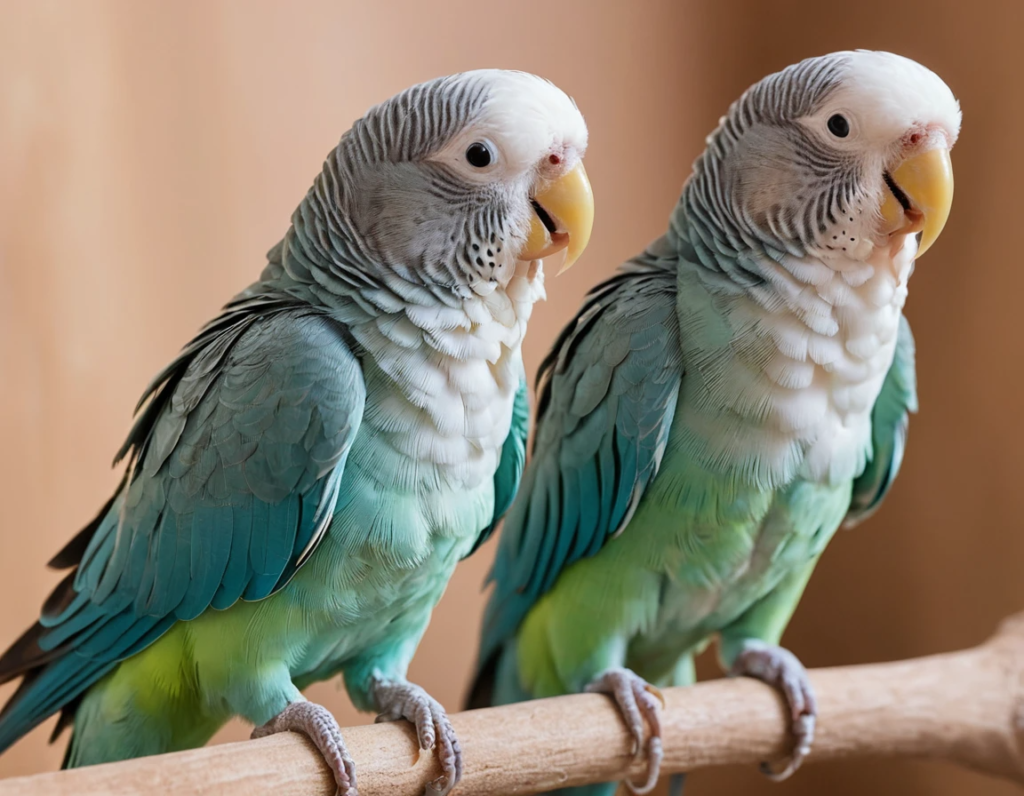
Bacterial respiratory infections in parakeets:
Parakeets are tiny, feathery bundles of joy—until they start sneezing, wheezing, and looking downright miserable. While we humans can just grab some soup and rest when we’re sick, birds don’t have it so easy. Bacterial respiratory infections can sneak up on your parakeet and cause serious respiratory problems if left untreated.
Let’s take a closer look at what causes these infections, how to spot them, and what you can do to help your little bird breathe easy again.
What Causes Bacterial Respiratory Infections in Parakeets?
Bacteria are everywhere (even on your phone screen—gross, right?), and some of them can be bad news for your bird’s respiratory system. Here are the usual suspects:
- Poor Cage Hygiene – A dirty cage is like a five-star hotel for bacteria. If waste builds up, so do harmful germs.
- Exposure to Sick Birds – If your parakeet hangs out with a sick friend, they might catch something contagious.
- Cold or Drafty Environments – Birds hate cold drafts. A chilly parakeet is more vulnerable to infections.
- Vitamin A Deficiency – Without enough Vitamin A, a bird’s immune system weakens, making it easier for bacteria to take over.
- Stress – Moving to a new home, loud noises, or an aggressive cage mate can weaken a parakeet’s immune defenses.
Symptoms of Bacterial Respiratory Infections
Unlike humans, parakeets can’t tell us when they feel sick. (Although, wouldn’t that be cool?) Instead, they show signs like:
- Sneezing and Nasal Discharge – If your bird’s nose is runny, it’s time to pay attention.
- Wheezing or Clicking Sounds – If your parakeet sounds like a broken squeaky toy, it’s not a good sign.
- Coughing – Yes, birds can cough! If you hear odd little cough-like noises, take it seriously.
- Open-Mouth Breathing – Gasping for air? That’s an emergency.
- Tail Bobbing with Breathing – If their tail moves up and down with each breath, their lungs are struggling.
- Lethargy and Fluffed Feathers – A puffed-up, quiet parakeet isn’t just chilling—it’s sick.
Diagnosing and Treating the Infection
If you suspect your parakeet has a bacterial respiratory infection, don’t try home remedies. Birds are delicate, and guessing wrong can make things worse. Here’s what to do:
- Visit an Avian Vet – They’ll check for infection and may run tests to find out what bacteria is causing trouble.
- Antibiotics – The vet might prescribe antibiotics to fight off the infection. Follow their instructions carefully!
- Improve Cage Cleanliness – Regularly clean perches, toys, and food bowls to prevent bacteria buildup.
- Keep the Bird Warm – A warm, stress-free environment helps with recovery.
- Boost Nutrition – Offer fresh fruits and veggies to strengthen the immune system.
Preventing Bacterial Respiratory Problems
Prevention is always better than treatment. Here’s how to keep your parakeet’s lungs happy and healthy:
- Clean the Cage Regularly – Remove droppings and uneaten food daily.
- Provide a Healthy Diet – Fresh produce (carrots, leafy greens, bell peppers) helps keep their immune system strong.
- Keep Them Away from Sick Birds – Quarantine new birds before introducing them.
- Avoid Drafts and Sudden Temperature Changes – Keep their environment stable and comfortable.
- Reduce Stress – Keep their routine predictable and their home calm.
Final Thoughts
Bacterial respiratory infections are no joke. They start small but can turn into serious respiratory problems fast. If you notice any unusual breathing, sneezing, or lethargy, don’t wait—get your feathery friend checked out by a vet ASAP.
Remember, a healthy parakeet is a chatty parakeet. So, if yours is unusually quiet, it might not be because they’re giving you the silent treatment—it could be time for a vet visit!
Diagnosing Respiratory Diseases in Parakeets:
Parakeets are tiny chatterboxes, constantly chirping, singing, and sometimes even talking back to you. But what happens when the chirping slows down, and instead, your bird sounds like it’s struggling to breathe? Respiratory problems in parakeets are more common than you think, and diagnosing them early can make all the difference.
Let’s take a closer look at how to figure out if your little feathered friend has a respiratory issue and what to do about it.
Signs That Your Parakeet Might Have a Respiratory Disease
Unlike humans, parakeets can’t grab a tissue and complain about feeling sick. They show their discomfort in more subtle ways, so it’s up to you to play detective. Here are some red flags:
- Wheezing or Clicking Sounds – If your bird sounds like a squeaky toy that’s seen better days, it’s time to pay attention.
- Open-Mouth Breathing – Parakeets don’t pant like dogs. If their beak is open while breathing, that’s a big warning sign.
- Tail Bobbing with Each Breath – If their tail moves up and down as they breathe, they’re working too hard to get air.
- Frequent Sneezing or Nasal Discharge – A little sneeze now and then is normal, but constant sneezing? Not so much.
- Lethargy and Fluffed-Up Feathers – If your usually energetic bird is sitting still, looking like a tiny puffball, something’s up.
- Loss of Voice – If your once-chatty parakeet suddenly goes silent, it’s not giving you the cold shoulder—it might be sick.
How Vets Diagnose Respiratory Diseases in Parakeets
If you’ve noticed these signs, it’s time for a vet visit. Your vet will likely use a few methods to diagnose the problem:
- Physical Examination – The vet will check for nasal discharge, weight loss, and abnormal breathing.
- Listening to Breathing – Using a tiny stethoscope (yes, they exist for birds!), the vet will listen for abnormal sounds in the lungs.
- X-Rays – If the problem is deep in the lungs or air sacs, an X-ray might be needed.
- Lab Tests – A sample from the nose or throat can help identify bacterial, viral, or fungal infections.
Common Respiratory Diseases in Parakeets
Once diagnosed, your vet will determine the cause. Here are some of the usual suspects:
- Bacterial Infections – Caused by poor cage hygiene or exposure to sick birds.
- Fungal Infections (Aspergillosis) – Often linked to moldy environments.
- Viral Infections – Some viruses attack the respiratory system and have no cure.
- Vitamin A Deficiency – A poor diet weakens the respiratory lining, making infections more likely.
- Environmental Toxins – Smoke, scented candles, and cleaning fumes can trigger breathing problems.
Treatment Options
Depending on the diagnosis, the vet may recommend:
- Antibiotics or Antifungals – To fight infections.
- Nebulization Therapy – Like a mini steam treatment to help clear airways.
- Improved Diet – More Vitamin A-rich foods like carrots and red peppers.
- Better Air Quality – Keeping the cage clean and avoiding household pollutants.
Final Thoughts
Diagnosing respiratory problems in parakeets isn’t always easy, but paying close attention to their breathing and behavior can help catch issues early. If you notice any unusual symptoms, don’t wait—get your little buddy to a vet ASAP.
Because let’s be honest, a parakeet that isn’t chirping is like a comedian without jokes—something just isn’t right!
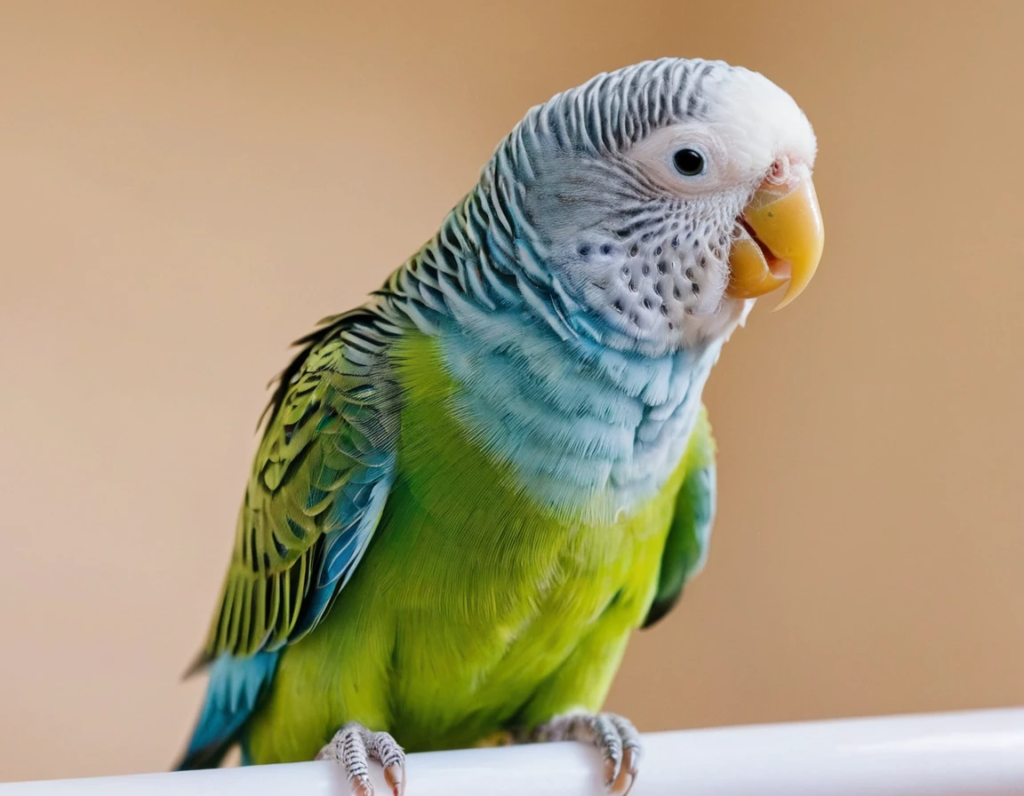
Treatment Options for Parakeet Respiratory Issues:
Parakeets are tiny, chatty, and full of energy—until respiratory problems slow them down. If your bird is wheezing, sneezing, or puffing up like a little feathered balloon, it’s time to step in. The good news? There are plenty of ways to help your parakeet recover and breathe easy again.
Let’s take a look at the best treatment options, from simple home fixes to vet-approved solutions.
1. Get a Vet’s Opinion (Because Google Can Only Do So Much)
Before trying any treatment, always take your parakeet to an avian vet. Respiratory problems can be caused by bacteria, fungi, viruses, or even environmental factors. A vet will determine the cause and recommend the right treatment—because guessing wrong could make things worse!
2. Antibiotics and Antifungal Medications
If your bird’s breathing trouble is caused by bacteria or fungi, a vet may prescribe antibiotics or antifungal medication. These usually come in the form of liquid drops or powder that can be mixed into drinking water.
(Note: Convincing a parakeet to take medicine is like negotiating with a toddler—it takes patience and a few clever tricks.)
3. Nebulization Therapy: A Mini Spa for Your Bird
Some parakeets need nebulization, which is basically a fancy word for bird-friendly steam therapy. The vet may use a special machine to help deliver medication directly into the lungs. If your bird has severe respiratory problems, this could be a game-changer.
4. Improve Cage Hygiene (Because No One Likes a Dirty Home)
A messy cage is like a petri dish for bacteria and fungi. Regularly clean your bird’s cage, perches, and food bowls to prevent infections. Also, avoid moldy food—your bird isn’t a fan of expired snacks either.
5. Keep the Air Clean and Fresh
- No Smoke or Strong Scents: Cigarette smoke, air fresheners, and scented candles can all irritate your bird’s lungs.
- Use a Humidifier: Dry air can make breathing more difficult, especially in winter.
- Avoid Drafts: Keep your parakeet away from air conditioning vents and open windows on cold days.
6. Boost Their Diet (Because Junk Food Isn’t Just Bad for Us)
A well-balanced diet helps strengthen your bird’s immune system. Vitamin A is especially important for respiratory health. Add fresh veggies like carrots, bell peppers, and leafy greens to your parakeet’s meals to keep their lungs in top shape.
7. Provide a Stress-Free Environment
Stress weakens a bird’s immune system, making them more prone to respiratory problems. Keep your parakeet’s environment calm, avoid sudden loud noises, and make sure they get plenty of rest.
8. Steam Therapy at Home (A DIY Bird Sauna)
If your parakeet has mild congestion, you can create a gentle steam treatment at home. Run a hot shower (without putting your bird in direct contact with the water) and let the bathroom fill with steam. This can help loosen mucus and ease breathing.
Final Thoughts
Respiratory issues in parakeets can be serious, but with the right treatment, your bird can recover quickly. Always consult a vet first, maintain a clean and stress-free environment, and make sure your feathered friend is eating well. A happy, healthy parakeet means more chirping, more chatter, and fewer worries!
Because let’s be honest—life is just better when your parakeet is back to its usual noisy self.
Preventing Respiratory Diseases in Parakeets:
Parakeets are small, chatty, and full of personality, but like any pet, they need proper care to stay healthy. One of the biggest concerns for these little birds? Respiratory problems. Since their tiny lungs are extra sensitive, even minor issues can quickly turn into serious health concerns.
The good news? You can take simple steps to prevent respiratory diseases and keep your parakeet feeling chirpy. Let’s look at the best ways to keep your bird’s lungs in top shape!
1. Keep That Cage Clean (Because No One Likes a Messy Home)
Imagine living in a house where no one ever takes out the trash. Gross, right? Well, a dirty cage is basically the same thing for your parakeet. Dust, old food, and droppings can create the perfect environment for bacteria and fungi to thrive, leading to respiratory problems.
- Clean food and water dishes daily.
- Change cage liners or bedding regularly.
- Scrub perches and toys weekly to prevent bacteria buildup.
2. Say No to Strong Scents and Smoke
Parakeets have super-sensitive lungs, and even things that smell nice to us can be dangerous for them. Avoid using air fresheners, scented candles, and strong cleaning chemicals near your bird’s cage. Also, if you smoke, keep it far away—secondhand smoke isn’t just bad for humans; it’s bad for birds too!
3. Avoid Drafts and Sudden Temperature Changes
Parakeets may be tough little creatures, but they don’t do well with drastic temperature shifts. Keep their cage away from:
- Open windows
- Air conditioning vents
- Heaters or fireplaces
A stable, warm (but not too warm!) environment helps prevent respiratory problems and keeps your bird comfortable.
4. Give Your Bird a Healthy, Balanced Diet
Nutrition plays a huge role in preventing illness. A diet lacking in Vitamin A can weaken your parakeet’s respiratory system, making them more susceptible to infections. To boost their health, make sure to offer:
- Fresh veggies like carrots, bell peppers, and leafy greens
- Fruits in moderation (like apples or berries)
- A high-quality seed mix or pellets
A well-fed bird is a healthy bird—and a happy one too!
5. Good Airflow is Key
While drafts are bad, stale air isn’t great either. If possible, keep your bird’s room well-ventilated without exposing them to direct cold air. An air purifier (without ionizers) can also help remove dust and airborne particles that might irritate their lungs.
6. Quarantine New Birds (Because Germs Love to Travel)
If you’re introducing a new bird to your home, don’t let them move in with your parakeet right away. Birds can carry respiratory infections without showing symptoms, so it’s best to quarantine newcomers for at least 30 days. This prevents your existing bird from catching any unwanted illnesses.
7. Reduce Stress (Because Even Birds Get Anxious)
A stressed-out bird is more vulnerable to illness. Keep your parakeet’s environment calm by:
- Avoiding loud noises and sudden movements
- Providing a consistent daily routine
- Giving them plenty of mental stimulation with toys and interaction
8. Regular Vet Checkups
Even if your bird seems fine, regular vet visits can catch early signs of illness before they become serious. Your vet can check for hidden respiratory problems and recommend any adjustments to your bird’s care routine.
Final Thoughts
Preventing respiratory diseases in parakeets isn’t complicated—it’s all about good hygiene, a healthy diet, and a stress-free environment. By following these simple steps, you can keep your bird chirping happily for years to come.
Because let’s be honest, life is just better when your parakeet is full of energy (and not giving you the silent treatment because they’re feeling under the weather)!
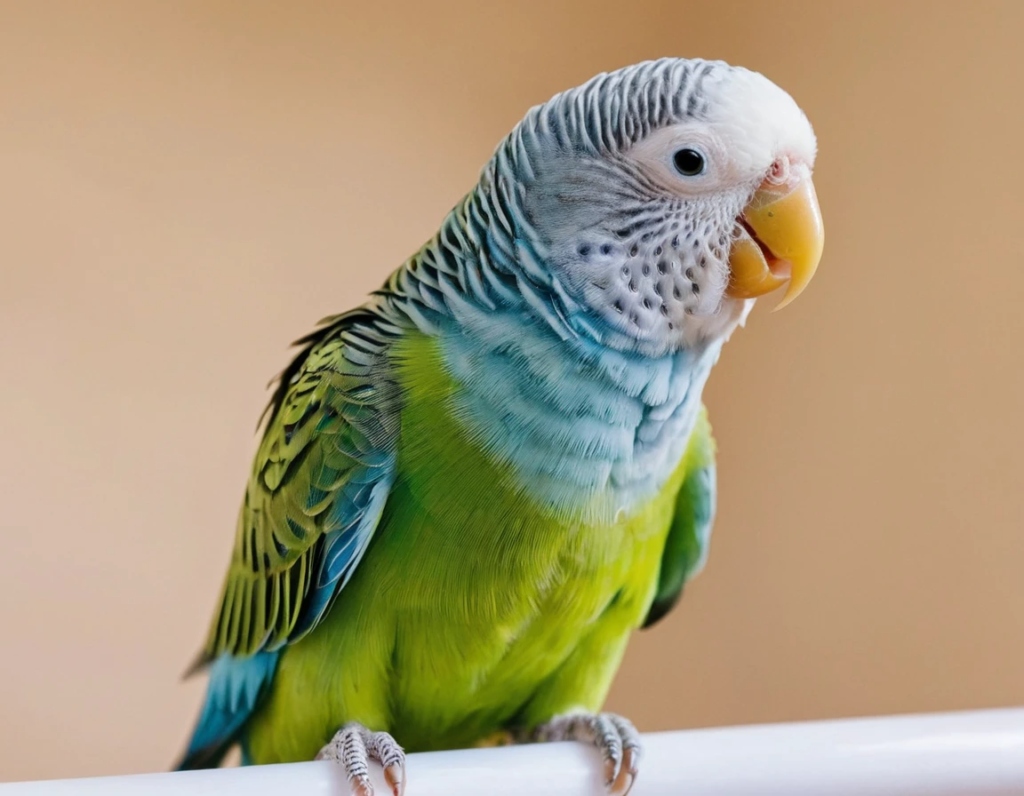
(FAQs) about Respiratory Problems in Parakeets
General Questions
1. What are the signs of respiratory problems in parakeets?
- Wheezing, coughing, sneezing, tail bobbing, nasal discharge, and labored breathing.
2. What causes respiratory problems in parakeets?
- Bacteria, fungi, viruses, poor air quality, vitamin deficiencies, and environmental toxins.
3. Can parakeets recover from respiratory diseases?
- Yes, with proper treatment and care, many respiratory issues can be managed or cured.
4. Are respiratory problems contagious among birds?
- Some infections, like Chlamydiosis, can spread between birds and even to humans.
5. How long does it take for a parakeet to recover from a respiratory infection?
- Recovery time varies, but mild cases improve in a few days with treatment, while severe cases may take weeks.
Symptoms & Diagnosis
Why is my parakeet making clicking or wheezing sounds?
- It could be a sign of a respiratory infection, air sac mites, or poor air quality.
Why is my parakeet breathing with its mouth open?
- Open-mouth breathing is a serious sign of respiratory distress and requires immediate vet attention.
Is tail bobbing always a sign of respiratory problems?
- While mild tail movement is normal, excessive bobbing with labored breathing is a warning sign.
How do vets diagnose respiratory problems in parakeets?
- Through physical exams, X-rays, lab tests, and listening to their breathing.
Can stress cause respiratory problems in parakeets?
- Yes, stress weakens their immune system, making them more vulnerable to infections.
Treatment & Home Care
11. How are respiratory infections in parakeets treated?
- With antibiotics, antifungal medications, nebulization, and supportive care.
12. Can I give my parakeet human cold medicine?
- No! Human medications can be toxic to birds. Always consult a vet.
13. How can I help my parakeet breathe better at home?
- Keep their environment warm, humid (steam therapy), and free from irritants.
14. Do parakeets need steam therapy for respiratory issues?
- Yes, mild steam therapy (not direct steam) can help loosen mucus and ease breathing.
15. Can improving my parakeet’s diet help with respiratory problems?
- Absolutely! Vitamin A-rich foods support respiratory health and prevent infections.
Prevention & Environmental Factors
16. How can I prevent respiratory diseases in my parakeet?
- Keep their cage clean, avoid strong scents, provide fresh air, and ensure a healthy diet.
17. Are air fresheners and candles dangerous for parakeets?
- Yes, strong scents and chemicals can irritate their lungs and cause breathing issues.
18. Can dust and mold cause respiratory problems in parakeets?
- Yes, poor cage hygiene and moldy food can lead to fungal infections like Aspergillosis.
19. Can secondhand smoke harm my parakeet’s breathing?
- Definitely! Smoke is highly toxic to birds and can lead to serious respiratory diseases.
20. Should I take my parakeet to the vet for mild respiratory symptoms?
- Yes! Birds hide illnesses well, so early vet visits can prevent serious complications.

